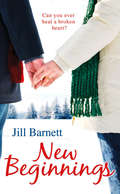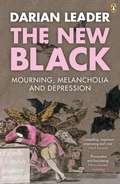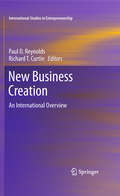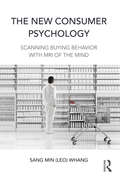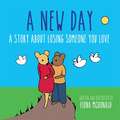- Table View
- List View
New Aspects of Human Ethology
by Alain SchmittRough-and-tumble play provided one of the paradigmatic examples of the appli- tion of ethological methods, back in the 1970's. Since then, a modest number of - searchers have developed our knowledge of this kind of activity, using a variety of methods, and addressing some quite fundamental questions about age changes, sex diff- ences, nature and function of behaviour. In this chapter I will review work on this topic, mentioning particularly the interest in comparing results from different informants and different methods of investigation. Briefly, rough-and-tumble play (or R&T for short) refers to a cluster of behaviours whose core is rough but playful wrestling and tumbling on the ground; and whose general characteristic is that the behaviours seem to be agonistic but in a non-serious, playful c- text. The varieties of R&T, and the detailed differences between rough-and-tumble play and real fighting, will be discussed later. 2. A BRIEF HISTORY OF RESEARCH ON R&T In his pioneering work on human play, Groos (1901) described many kinds of rough-and-tumble play. However, R&T was virtually an ignored topic from then until the late 1960's. There was, of course, a flowering of observational research on children in the 1920s and 1930s, especially in North America; but this research had a strong practical o- entation, and lacked the cross-species perspective and evolutionary orientation present in Groos' work.
New Beginnings
by Jill BarnettWhen loved ones leave you, it’s time to change your life… A poignant and uplifting story for fans of Amanda Prowse.
The New Behaviorism: Second Edition
by John StaddonThis groundbreaking book presents a brief history of behaviorism, the dominant movement in American psychology in the first half of the 20th Century. It then analyzes and criticizes radical behaviorism, as pioneered by B.F. Skinner, and its philosophy and applications to social issues. This second edition is a completely rewritten and much expanded version of the first edition, published nearly 15 years earlier. It surveys what changes have occurred within behaviorism and whether it has maintained its influence on experimental cognitive psychology or other fields. The mission of the book is to help steer experimental psychology away from its current undisciplined indulgence in "mental life" toward the core of science, which is an economical description of nature. The author argues that parsimony -- the elementary philosophical distinction between private and public events, even biology, evolution and animal psychology -- all are ignored by much contemporary cognitive psychology. The failings of radical behaviorism as well as a philosophically defective cognitive psychology point to the need for a new theoretical behaviorism, which can deal with problems such as "consciousness" that have been either ignored, evaded or muddled by existing approaches. This new behaviorism provides a unified framework for the science of behavior that can be applied both to the laboratory and to broader practical issues such as law and punishment, the health-care system, and teaching.
The New Behaviorism: Second Edition
by John StaddonThis groundbreaking book presents a brief history of behaviorism, the dominant movement in American psychology in the first half of the 20th Century. It then analyzes and criticizes radical behaviorism, as pioneered by B.F. Skinner, and its philosophy and applications to social issues. This second edition is a completely rewritten and much expanded version of the first edition, published nearly 15 years earlier. It surveys what changes have occurred within behaviorism and whether it has maintained its influence on experimental cognitive psychology or other fields. The mission of the book is to help steer experimental psychology away from its current undisciplined indulgence in "mental life" toward the core of science, which is an economical description of nature. The author argues that parsimony -- the elementary philosophical distinction between private and public events, even biology, evolution and animal psychology -- all are ignored by much contemporary cognitive psychology. The failings of radical behaviorism as well as a philosophically defective cognitive psychology point to the need for a new theoretical behaviorism, which can deal with problems such as "consciousness" that have been either ignored, evaded or muddled by existing approaches. This new behaviorism provides a unified framework for the science of behavior that can be applied both to the laboratory and to broader practical issues such as law and punishment, the health-care system, and teaching.
The New Behaviorism: Foundations of Behavioral Science
by John StaddonThis ground-breaking book presents a brief history of behaviorism, along with a critical analysis of radical behaviorism, its philosophy and its applications to social issues. This third edition is much expanded and includes a new chapter on experimental method as well as longer sections on the philosophy of behaviorism. It offers experimental and theoretical examples of a new approach to behavioral science. It provides an alternative philosophical and empirical foundation for a psychology that has rather lost its way. The mission of the book is to help steer experimental psychology away from its current undisciplined indulgence in "mental life" toward the core of science, which is an economical description of nature: parsimony, explain much with little. The elementary philosophical distinction between private and public events, even biology, evolution and animal psychology are all ignored by much contemporary cognitive psychology. The failings of radical behaviorism as well as a philosophically defective cognitive psychology point to the need for a new theoretical behaviorism, which can deal with problems such as "consciousness" that have been either ignored, evaded or muddled by existing approaches. This new behaviorism provides a unified framework for the science of behavior that can be applied both to the laboratory and to broader practical issues such as law and punishment, the health-care system, and teaching.
The New Behaviorism: Foundations of Behavioral Science
by John StaddonThis ground-breaking book presents a brief history of behaviorism, along with a critical analysis of radical behaviorism, its philosophy and its applications to social issues. This third edition is much expanded and includes a new chapter on experimental method as well as longer sections on the philosophy of behaviorism. It offers experimental and theoretical examples of a new approach to behavioral science. It provides an alternative philosophical and empirical foundation for a psychology that has rather lost its way. The mission of the book is to help steer experimental psychology away from its current undisciplined indulgence in "mental life" toward the core of science, which is an economical description of nature: parsimony, explain much with little. The elementary philosophical distinction between private and public events, even biology, evolution and animal psychology are all ignored by much contemporary cognitive psychology. The failings of radical behaviorism as well as a philosophically defective cognitive psychology point to the need for a new theoretical behaviorism, which can deal with problems such as "consciousness" that have been either ignored, evaded or muddled by existing approaches. This new behaviorism provides a unified framework for the science of behavior that can be applied both to the laboratory and to broader practical issues such as law and punishment, the health-care system, and teaching.
The New Black: Mourning, Melancholia and Depression
by Darian LeaderThe New Black is Darian Leader's compassionate and illuminating exploration of melancholyWhat happens when we lose someone we love? A death, a separation or the break-up of a relationship are some of the hardest times we have to live through. We may fall into a nightmare of depression, lose the will to live and see no hope for the future. What matters at this crucial point is whether or not we are able to mourn. In this important and groundbreaking book, acclaimed psychoanalyst and writer Darian Leader urges us to look beyond the catch-all concept of depression to explore the deeper, unconscious ways in which we respond to the experience of loss. In so doing, we can loosen the grip it may have upon our lives.'His orthodox, psychoanalytical approach, produces an unpredictable, occasionally brilliant book. The New Black is a mixture of Freudian text, clinical assessments and Leader's own brand of gentle wisdom'Herald'Compelling and important . . . an engrossing and wise book'Hanif Kureishi'There are many self-help books on the market . . . The New Black is a book that might actually help'IndependentDarian Leader is a psychoanalyst practising in London and a member of the Centre for Freudian Analysis and Research and of the College of Psychoanalysts - UK. He is the author of The New Black, Strictly Bipolar, Why do women write more letters than they post?, Promises lovers make when it gets late, Freud's Footnotes and Stealing the Mona Lisa, and co-author, with David Corfield, of Why Do People Get Ill? He is Honorary Visiting Professor in the School of Human and Life Sciences, Roehampton University.
The New Board: Changing Issues, Roles and Relationships
by Mat Raymond Schimmer Nadia Ehrlich FinkelsteinMeet the challenge of coordinating effective board-staff teamwork! Using specific real-life examples and informed recommendations for board management, The New Board: Changing Issues, Roles and Relationships explains why and how to consider redesigning your board form and practice. The innovations suggested here, from minor adjustments to far-reaching reorganization, can help you find and keep board members, make board functioning more efficient, and help you comply with the new, stricter rules of managed care. The New Board informs the boards and staff of nonprofit residential service agencies about the nature of major contemporary challenges to board functioning. This innovative book offers an unusually diverse collection of contributors, including board members, executive staff, and academics. The resulting diversity of viewpoint produces a satisfying range of theoretical conversation and detailed description of actual practice. The New Board explores all the issues that affect boards in these days of rapid change: variations of board structures the pressures of managed care the increased complexity of service reduced board member availability the challenge of fund raising by modern boards contemporary considerations of legal liability of nonprofit boards The innovative ideas found in The New Board will help you and your nonprofit organization face the changes and challenges of the world of managed care. It is an essential resource for anyone interested in nonprofit organizations: CEOs and executive staff, academics and students in the field of nonprofit management, and board members themselves.
The New Board: Changing Issues, Roles and Relationships
by Mat Raymond Schimmer Nadia Ehrlich FinkelsteinMeet the challenge of coordinating effective board-staff teamwork! Using specific real-life examples and informed recommendations for board management, The New Board: Changing Issues, Roles and Relationships explains why and how to consider redesigning your board form and practice. The innovations suggested here, from minor adjustments to far-reaching reorganization, can help you find and keep board members, make board functioning more efficient, and help you comply with the new, stricter rules of managed care. The New Board informs the boards and staff of nonprofit residential service agencies about the nature of major contemporary challenges to board functioning. This innovative book offers an unusually diverse collection of contributors, including board members, executive staff, and academics. The resulting diversity of viewpoint produces a satisfying range of theoretical conversation and detailed description of actual practice. The New Board explores all the issues that affect boards in these days of rapid change: variations of board structures the pressures of managed care the increased complexity of service reduced board member availability the challenge of fund raising by modern boards contemporary considerations of legal liability of nonprofit boards The innovative ideas found in The New Board will help you and your nonprofit organization face the changes and challenges of the world of managed care. It is an essential resource for anyone interested in nonprofit organizations: CEOs and executive staff, academics and students in the field of nonprofit management, and board members themselves.
A New Body-Mind Approach: Clinical Cases
by Jean Benjamin StoraIntegrative psychosomatics is a new approach to explaining illnesses and how patients relate to their problems. This new discipline draws on psychoanalysis, medicine and the neurosciences, rather than solely on psychoanalysis, which has inspired all the psychosomatic approaches until now. Amongst the fascinating and compelling questions that this book raises are: how can we understand an illness if we only analyse the psyche? How can we understand patients if we only take account of their biological data? Are hypochondriac problems generated by the mind, as some doctors believe, or are the problems in fact more complex? The author also considers whether traditional psychoanalysis and medicine might actually distance practitioners from an understanding of patients and illnesses. For integrative psychosomatics, the psyche or the mind can play either a greater or lesser role in illness: advances in research in the neurosciences and biology over the last twenty years have uncovered many biological and genetic processes involved in the relations between the central nervous system and the other systems that constitute the human psychosomatic entity.
A New Body-Mind Approach: Clinical Cases
by Jean Benjamin StoraIntegrative psychosomatics is a new approach to explaining illnesses and how patients relate to their problems. This new discipline draws on psychoanalysis, medicine and the neurosciences, rather than solely on psychoanalysis, which has inspired all the psychosomatic approaches until now. Amongst the fascinating and compelling questions that this book raises are: how can we understand an illness if we only analyse the psyche? How can we understand patients if we only take account of their biological data? Are hypochondriac problems generated by the mind, as some doctors believe, or are the problems in fact more complex? The author also considers whether traditional psychoanalysis and medicine might actually distance practitioners from an understanding of patients and illnesses. For integrative psychosomatics, the psyche or the mind can play either a greater or lesser role in illness: advances in research in the neurosciences and biology over the last twenty years have uncovered many biological and genetic processes involved in the relations between the central nervous system and the other systems that constitute the human psychosomatic entity.
New Business Creation: An International Overview (International Studies in Entrepreneurship #27)
by Paul D. Reynolds and Richard T. CurtinUnderstanding the origins of new businesses — the firm creation process—has been dramatically affected by the development of longitudinal studies of business start-ups. Several projects have been implemented to track the development of new firms, from the emergence of a business idea and organization of a start-up team through the birth of an operational business. The U.S. projects (the first and second Panel Studies of Entrepreneurial Dynamics, known as PSED I and II) have counterparts in a number of other countries: Australia, Canada, China, Latvia, Netherlands (two projects), Norway, and Sweden. These eleven projects in nine countries, implemented over the past decade, are at different stages of development and have been utilized for a wide range of assessments of entrepreneurial and business creation phenomena. This volume presents the state of the art of these international research projects, providing the first in-depth comparison of the firm creation data across a wide range of national contexts. The work will be of great interest to the research community, particularly those developing such projects in their own countries, as well as policy makers and scholars interested in the effect of national context on the business creation process.
The New Childhood: Raising kids to thrive in a digitally connected world
by Jordan ShapiroIT'S TIME FOR A NEW APPROACH TO SCREEN TIME.Jordan Shapiro believes we need to rethink parental attitudes to technology. There's a damaging orthodoxy that presents screen-time as the ultimate modern parenting evil and the only acceptable response to it is restriction. Shapiro, psychologist, educational pioneer and father of two, draws on cutting-edge research in education, philosophy, neuroscience and psychology to show we've let fear and nostalgia stand in the way of our children's best interests. In his optimistic, inspiring and practical guide to the new, digital frontier of childhood, he reframes gaming, social media and smartphones to offer fresh, evidence-based advice on how to take a more progressive approach.*Winner of the Spirituality & Practice Book Award as one of the 50 Best Spiritual Books of 2018.*'Shapiro successfully transforms our worst fears about screen time into excitement about the potential for redesigning childhood around our latest technologies ... It's a necessary book that I urge you to read.' - The Telegraph'Shapiro knows what he's talking about ... Shapiro's arguments are compelling' - USA Today'a thought-provoking, bold read. As a father of two daughters at similar ages to Jordan's children (7 and 9), facing similar challenges and dilemmas, the book provided me with an inspiring and optimistic perspective that's rare in the current media landscape.' - Variety'Timely, essential, and thought-provoking, The New Childhood is the must-read parenting guide for raising 21st century, digitally driven kids. Instead of raising a white flag and giving in to social media and the Internet, Jordan Shapiro tells parents how to embrace technology, stay involved in their children's lives, and prepare them for their future. Read it! I promise you'll rethink your parenting. I couldn't put it down' - Michele Borba, EdD, author of UnSelfie: Why Empathetic Kids Succeed In Our All-About-Me World
New Coach: Reflections From A Learning Journey (UK Higher Education OUP Humanities & Social Sciences Counselling and Psychotherapy)
by Lis Paice"Lis Paice's positivity shines through on every page of this book. She writes in a beautifully simple and accessible style. The book will be a tremendous introduction for those setting out on the same path as new coaches, or for more experienced coaches who want to compare their journey with hers." Dr John Launer, Honorary Consultant and Senior Clinical Lecturer at the Tavistock Clinic, London, UK"I love this book. I've not seen a book before that uses the experience of the one who is learning rather than just telling you how to do it. It will be so useful in taking away the inevitable anxiety that comes when you are about to learn a new skill - and learn it in public. The author's honesty about her own pitfalls will help you know what to expect, and the light bulb moments that she has as she progresses will undoubtedly light up the occasional bulb for you too. It might be a book about learning, but it's also a book that outlines the skills of coaching in a whole new way."Jenny Firth-Cozens, Imperial College London, UK"This is a marvellous record of the journey recorded by a senior doctor-educationalist as she strived to gain the skills of a coach. Any new coach will find it difficult to put down as it will resonate with many of their own first reflections. She is open about her mistakes from the start. On her first day of coach training she had a moment of kairos, and she set her goal to train to the highest level, which she continues to do."Dr Rebecca Viney, Coaching and Mentoring Lead, London Deanery, UK"There are many books on coaching that give advice on what coaches should do. This book is different. Describing herself as a 'self-critical learner', Liz traces her journey into becoming a coach, telling a uniquely honest story, 'warts and all' that all of us can learn from. This is like reading someone's personal, reflective diary, rather than a recipe book on 'how to coach'. The result is both engaging and highly illuminating." David E Gray, Professor of Leadership and Organisational Behaviour, University of Greenwich, UKYou can't summarize if you haven't been listening.Coach and client share the encounter, not the experience.The better you get, the less you say.The client is the hero, not the coach. Coaching is a skill for life. This frank account of one leader's journey to become a coach is a must have for beginner coaches. It will strike a chord with anyone who has been on a similar journey or has just begun professional training, discovering the disappointments, triumphs and surprises of learning to coach and coming to their own personal insights. Lis Paice's easy conversational style and rich supply of real-life examples make this an enjoyable read even for the absolute beginner. The questions she raises about coaching will also stimulate reflection for experienced coaches, trainers and supervisors. Topics include: What coaching is all about How coaching differs from other ways of helping What the role of the coach entails Getting to grips with the principles of coaching; Learning by experience why the rules matter Trying out different tools and techniques Finding ways of helping the client to new perspectives and insights Avoiding complacency
The New Consumer Psychology: Scanning buying behavior with MRI of the mind
by Sang Min WhangThe term ‘consumption’ is generally thought of as process by which individuals purchase goods and services. The New Consumer Psychology attempts to explain consumption as a social behavior that satisfies individual values and desires. In modern society, individual needs are no longer determined solely by age or gender, but by the life values and desires that one pursues. This book uncovers people's subjective experiences of consumption in the capitalist society with interesting inside stories ranging from politics to designer handbags. The book also provides valuable consumer insights into business and individuals by going beyond the limitations of population statistics and demonstrates Q-methodology is used to analyse consumers’ subjective responses. This book is an interesting take on how we should shift our focus from products to people and explains why identification and interpretations of different consumer groups are important in smart targeting. Its content will definitely inspire marketing strategies and market effectiveness.
The New Consumer Psychology: Scanning buying behavior with MRI of the mind
by Sang Min WhangThe term ‘consumption’ is generally thought of as process by which individuals purchase goods and services. The New Consumer Psychology attempts to explain consumption as a social behavior that satisfies individual values and desires. In modern society, individual needs are no longer determined solely by age or gender, but by the life values and desires that one pursues. This book uncovers people's subjective experiences of consumption in the capitalist society with interesting inside stories ranging from politics to designer handbags. The book also provides valuable consumer insights into business and individuals by going beyond the limitations of population statistics and demonstrates Q-methodology is used to analyse consumers’ subjective responses. This book is an interesting take on how we should shift our focus from products to people and explains why identification and interpretations of different consumer groups are important in smart targeting. Its content will definitely inspire marketing strategies and market effectiveness.
The New Contextual Therapy: Guiding the Power of Give and Take
by Terry D. Hargrave Franz PfitzerThrough detailing and examining the four interplaying dimensions of relationships, Contextual Theory gives therapists the ability to reshape human relationships and solve problems using the strengths of trust, fairness, and freedom. Not just a review of what came before, this brief clinical guide de-mystifies the Contextual Theory of family counseling for practitioners and students in language that is succinct and lucid in order to expose a whole new generation of therapists to this important approach to family therapy.
The New Contextual Therapy: Guiding the Power of Give and Take
by Terry D. Hargrave Franz PfitzerThrough detailing and examining the four interplaying dimensions of relationships, Contextual Theory gives therapists the ability to reshape human relationships and solve problems using the strengths of trust, fairness, and freedom. Not just a review of what came before, this brief clinical guide de-mystifies the Contextual Theory of family counseling for practitioners and students in language that is succinct and lucid in order to expose a whole new generation of therapists to this important approach to family therapy.
The New Culture of Therapeutic Activity with Older People (Speechmark Editions)
by Tessa PerrinOnce viewed as entertainment, activity provision is increasingly being seen as of therapeutic value and an integral part of quality care practice. This change has been so rapid and far-reaching that many staff teams have been left behind, attempting to address new culture requirements with old culture knowledge. This book clarifies and illuminates the changes that have been taking place in the field of activity provision over recent years, and offers a guideline to those who are endeavouring to catch up. The contents include: the difference between old culture and new culture thinking and practice; the new culture from the perspective of the politician, the manager, the care assistant, the activity provider, the researcher, the trainer, the community worker and the activity charity. Between them, the contributors bring a breadth of experience of the changing culture that spans more than three decades. The contributors include: Tessa Perrin; Rosemary Hurtley; Keena Millar Sylvie Silver; Paul Smith; Hazel May; Charlie Murphy; Vivienne Ratcliffe; Kenneth Hawes; Helen Crumpton; Carline Ryder-Jones, Wendy Ferguson Rebecca Colledge; Richard Mepham; Sally Knocker; Simon Labbett. This is a vital resource for all staff and management of care settings for older people.
The New Culture of Therapeutic Activity with Older People (Speechmark Editions)
by Tessa PerrinOnce viewed as entertainment, activity provision is increasingly being seen as of therapeutic value and an integral part of quality care practice. This change has been so rapid and far-reaching that many staff teams have been left behind, attempting to address new culture requirements with old culture knowledge. This book clarifies and illuminates the changes that have been taking place in the field of activity provision over recent years, and offers a guideline to those who are endeavouring to catch up. The contents include: the difference between old culture and new culture thinking and practice; the new culture from the perspective of the politician, the manager, the care assistant, the activity provider, the researcher, the trainer, the community worker and the activity charity. Between them, the contributors bring a breadth of experience of the changing culture that spans more than three decades. The contributors include: Tessa Perrin; Rosemary Hurtley; Keena Millar Sylvie Silver; Paul Smith; Hazel May; Charlie Murphy; Vivienne Ratcliffe; Kenneth Hawes; Helen Crumpton; Carline Ryder-Jones, Wendy Ferguson Rebecca Colledge; Richard Mepham; Sally Knocker; Simon Labbett. This is a vital resource for all staff and management of care settings for older people.
A New Day: A Story About Losing Someone You Love (PDF)
by Fiona McdonaldBrown Mouse is too sad to get out of bed and the other mice can do nothing to make her feel better. Grey Mouse has died which has made all the mice sad. Grey Mouse was kind and sweet and made perfect tea. Brown Mouse needs some time and space to remember her. That night Brown Mouse wakes up and sits with the other mice drinking hot tea and sharing special memories of Grey Mouse. Brown Mouse's memories of Grey Mouse make her smile, and as the sun rises, Brown Mouse feels ready for a new day. This gentle and comforting illustrated book will help children and young adults with profound and multiple learning disabilities (PMLD) grasp the difficult concept that is the death of a loved one. Featuring appealing black and white artwork and strong characters, Brown Mouse's story will assist parents, family and carers in giving children and those with PMLD a safe way to process loss and bereavement.
New Developments and Techniques in Structural Equation Modeling
by George A. Marcoulides Randall E. SchumackerFeaturing contributions from some of the leading researchers in the field of SEM, most chapters are written by the author(s) who originally proposed the technique and/or contributed substantially to its development. Content highlights include latent variable mixture modeling, multilevel modeling, interaction modeling, models for dealing with nonstandard and noncompliance samples, the latest on the analysis of growth curve and longitudinal data, specification searches, item parceling, and equivalent models. This volume will appeal to educators, psychologists, biologists, business professionals, medical researchers, and other social and health scientists. It is assumed that the reader has mastered the equivalent of a graduate-level multivariate statistics course that included coverage of introductory SEM techniques.
New Developments and Techniques in Structural Equation Modeling
by George A. Marcoulides Randall E. SchumackerFeaturing contributions from some of the leading researchers in the field of SEM, most chapters are written by the author(s) who originally proposed the technique and/or contributed substantially to its development. Content highlights include latent variable mixture modeling, multilevel modeling, interaction modeling, models for dealing with nonstandard and noncompliance samples, the latest on the analysis of growth curve and longitudinal data, specification searches, item parceling, and equivalent models. This volume will appeal to educators, psychologists, biologists, business professionals, medical researchers, and other social and health scientists. It is assumed that the reader has mastered the equivalent of a graduate-level multivariate statistics course that included coverage of introductory SEM techniques.
New Developments in Autism: The Future is Today
by Sally Wheelwright Manuel CasanovaThis international collection provides a comprehensive overview of cutting-edge research on autism spectrum disorders (ASDs) by well-known experts in the field, stressing the importance of early diagnosis and a good working relationship between parents and professionals.
New Developments in Dementia Prevention Research: State of the Art and Future Possibilities (Aging and Mental Health Research)
by Kate Irving Eef Hogervorst Deborah Oliveira Miia KivipeltoNew Developments in Dementia Prevention Research addresses a dearth of knowledge about dementia prevention and shows the importance of considering the broader social impact of certain risk factors, including the role we each play in our own cognitive health throughout the lifespan. The book draws on primary and secondary research in order to investigate the relationship between modifiable factors, including vascular and psychosocial risks, that may affect the incidence of dementia. Bringing together world-leading expertise from applied science, medicine, psychology, health promotion, epidemiology, health economics, social policy and primary care, the book compares and contrasts scientific and service developments across a range of settings. Each chapter presents these themes in a way that will ensure best practice and further research in the field of dementia prevention is disseminated successfully throughout the world. Perhaps most importantly, chapters also question what type of social responsibility we are prepared to embrace in order to address the challenges inherent in dementia prevalence. New Developments in Dementia Prevention Research includes contributions from leading authorities in brain health and dementia prevention and provides an essential contribution to the discourse on dementia prevention. It will be of great interest to academics, researchers and postgraduate students engaged in the study of the psychological and social aspects of aging and dementia.

